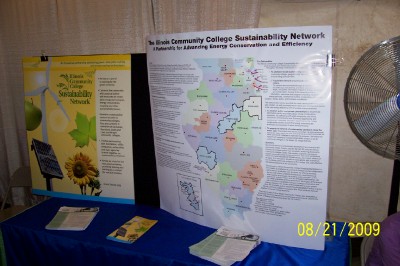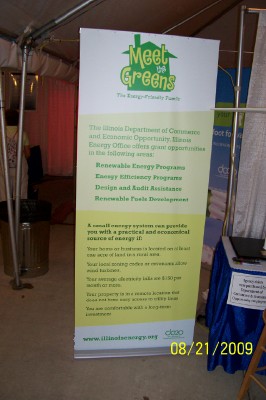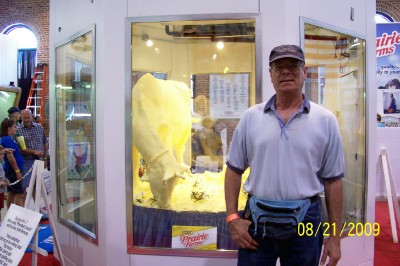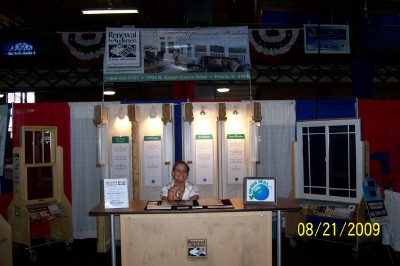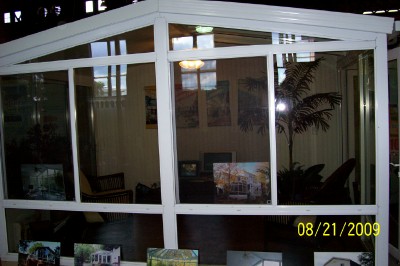It’s Jam Band Friday – http://www.youtube.com/watch?v=GasFKkVkgSI
Weatherize and improvise, renters have very little choice:
http://ask.metafilter.com/25694/Help-us-weatherproof-our-house
Help us weatherproof our house.
October 17, 2005 6:25 PM
I need suggestions for inexpensive weatherproofing on our home.
My husband and I rent a townhome (in Denver) and it is horribly drafty. We can feel cold air coming in through most of our windows. We love our little house–it’s a lot of space for the money–but we have a very uhm, “hands-off” landlord and there’s little to no chance to get them to invest any money in weatherproofing. With energy prices the way they are, I’d love some low-cost suggestions for how to weatherproof our windows along with any other tips for keeping warm while keeping our energy costs down. We’re living on a one-income graduate student budget, so I have to stress the low-cost part. Thank you!1. cheap: Plastic for your windows! You can get it at hardware stores pretty cheaply [whole house of wondows for maybe $20-30 if you shop in bulk at Home Depot or someplace. It’s a bit ugly but basically you tape this plastic over your windows, use a blow dryer on it to shrink the plastic, and voila, you can see out but wind can’t get in. Hair dryers cost a few bucks at a thrift store if you don’t have one. If you have friends, borrow a heat gun if possible.
2. nearly free: make little outlet and light switch gaskets. [instructions]
3. make from common household items: draft stoppers for underneath doors. Get an old pair of nylons and stuff them with rags, old socks, other fabric and some sand/rocks/something heavy. Lay on floors by doors to the outside or colder rooms.
4. worth the $: curtains and rugs and a hassock for your feet so you don’t notice the cold as much. Close curtains at night, open in the morning. An electric mattress pad warmer can heat up the bed before you get in it without you having to sleep under a plugged in appliance all night.
5. also: if it’s a big house shut off a room or two that you don’t use much and cut off the heat to those rooms [if you can] and focus on the parts of the house you actually live in. Cook more meals that take longer to heat up the kitchen. Keeping moving helps you stay warmer.
posted by jessamyn at 6:46 PM on October 17, 2005
:}
Check your local utility company’s website. They likely have a list of energy saver tips, household energy guzzlers (so you can prioritize), programs that provide weatherization and/or discounts to low-income households. Call them too. Some util companies are willing to schedule a free onsite energy audit to help you find the worst offenders.
The plastic over the windows trick is good. Just make sure you’re using the right tape. Some can leave a gummy residue or else pull off the paint/wallpaper underneath. Painter’s tape is not transparent, but it’s designed to remove cleanly.
If the landlord is willing to greenlight DIY improvements, $20-30 in materials can buy enough weatherstrip, outlet/switch seals, and door gaskets for a 1 bd apt. All you need is a screwdriver, a pair of scissors, and several hours time. Since weatherstrip just fills in the gaps between door/window and frame, you’ll be able to open & close year-round. Plus in the summer it’ll help keep out whatever bugs normally come in through those same gaps.
:}
http://www.youtube.com/watch?v=Xh-sXCTiuXA&feature=PlayList&p=C0DC6B13F2AAAA74&index=8
Here is what I did a couple of years ago (in my case it was mainly to reduce my cooling bills, but they’re still applicable):
- Install curtains or other air barriers on all windows and sliding-glass doors.
- If your existing HVAC thermostat is not a programmable “set back” thermostat, replace it with one that is.
- Replace or install weatherstripping on windows.
- Replace or install weatherstripping and door sweeps on exterior doors or a door to a garage. Also consider installing weatherstripping and door sweeps on interior doors to less-often used rooms.
- If you have a little-used room, such as a laundry room, close the heating vent to the room, install a vent cover, and keep the door closed.
- Caulk cracks (use a good UV & weather-resistant caulk for the exterior and a cheaper paintable caulk for the interior). In particular, check around the roof-line or anywhere something penetrates a wall (such as ceiling beams, vents or pipes). Make sure to seal around any exterior outlets (and consider installing exterior outlet covers).
- Seal air leaks and other larger gaps with expanding foam. Good places to check are around switch and outlet boxes, places where ceiling beams penetrate interior walls, etc.
- If your HVAC ducts are accessible, seal any leaks with metal-backed tape or mastic. Also consider applying insulation, if they are uninsulated.
- Install outlet cover plates on interior outlets in exterior walls.
- Install foam gaskets inside all interior electric outlet and switch boxes behind the outlet and switch plate covers.
- If you have a hot water tank, consider installing an exterior tank wrap (make sure it doesn’t warn against using a tank wrap).
:}
http://www.youtube.com/watch?v=6SPogGqCgeM&feature=PlayList&p=C0DC6B13F2AAAA74&index=9
And you can get it all at ACE The Friendly Hardware Place – A socialist cooperative:
http://www.acehardware.com/info/index.jsp?categoryId=1282811
The average house-even when well-insulated-contains cracks and gaps between building materials that add up to a hole about 14 inches square (see image below). In the winter, those gaps may make the house drafty and chilly. All year long, a leaky house not only wastes energy but can lead to water damage and provide a path for insects.
Inside this document you will find information about:
- Weatherproofing Basics
- Types of Caulking
- Using Caulking
- Types of Weatherstripping
- Installing Weatherstripping

WEATHERPROOFING BASICS
- In all the discussion of insulation and R-values, don’t forget that poor weatherproofing is often a more important source of discomfort, as well as high heating and cooling bills.
- Some air leakage can be prevented during construction by using housewrap or getting a tight fit between framing members, for example. Once the house is built, however, the remaining gaps must be sealed. Gaps around doors and window sashes should be weatherstripped, and gaps between permanent building materials sealed with caulking.

:}
Tight is nice
http://www.youtube.com/watch?v=pfArO24gSNw&feature=PlayList&p=C0DC6B13F2AAAA74&index=15
:}







